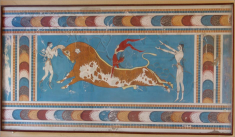Speaker
Description
Electron-impact excitation (EIE) of atoms and ions is one of fundamental processes in astrophysical and laboratory plasmas. Chen et al. [1] studied the relativistic effect on the angular distribution of Auger electrons following EIE of Be-like ions. However, as a main part of the relativistic effect, the Breit interaction on the angular distribution was not considered. In this work [2], we study the angular distribution of the Auger electrons emitted from the nonradiative decay $1s2s^{2}2p_{1/2}$ $J$=$1$ → $1s^{2}2s$ $J$=$1/2$ of highly charged Be-like Mg$^{8+}$, Fe$^{22+}$, Mo$^{38+}$, Nd$^{56+}$, Au$^{75+}$, and U$^{88+}$ ions following the EIE $1s$ → $2p$ of these ions using the multiconfigurational Dirac-Fock method and the relativistic distorted-wave theory. Special attention is paid to the effect of the Breit interaction on the angular distribution of the Auger electrons. It is found that for low-Z ions the Breit interaction hardly contributes to the angular distribution, while for medium- and high-Z ions the contribution of the Breit interaction is of the essence, which becomes more prominent with increasing impact electron energy.
References
[1] M. H. Chen and K. J. Reed, Phys. Rev. A 50, 2279 (1994).
[2] Z. W. Wu, Y. Li, Z. Q. Tian, and C. Z. Dong, Phys. Rev. A 105, 032809 (2022).
Details
Dr. Zhongwen Wu, Helmholtz Institute Jena, Germany
https://www.hi-jena.de/
http://www.atomic-theory.uni-jena.de/
| Is this abstract from experiment? | No |
|---|---|
| Name of experiment and experimental site | N/A |
| Is the speaker for that presentation defined? | Yes |
| Internet talk | Maybe |
